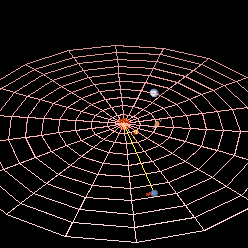
The planets — Kepler-66b and Kepler-67b — are both smaller than the planets previously found in clusters. They are slightly smaller than Neptune, but larger than the Earth and circle sunlike stars.
"We don’t have any planet that falls in that size bin or that mass bin between the Earth and Neptune, so we have to try to speculate about how they might be, structurally speaking," lead study author Soren Meibom, of the Harvard-Smithsonian Center for Astrophysics, said. "It’s unlikely that they’re completely solid like the Earth because there is no precedence for that. If you have a planet this size, three-quarters the size of Neptune, about three Earth radii, it’s very likely to have a gaseous envelope, so it’s kind of in between a rocky planet like a Neptune … but we don’t have any analogue in the solar system, so we’re left guessing a little bit."
The new research is detailed in the June 27 issue of the journal Nature.
Source







No comments:
Post a Comment